Welcome to the fascinating world of Cape Verde biodiversity! In this article, we will explore the diverse animal and plant species that call this island country home, as well as the challenges they encounter.
- Cape Verde is known for its unique biodiversity and plays host to a wide variety of animal and plant species.
- The country has made significant progress in documenting and studying biodiversity but further research is needed.
- Approximately 20% of terrestrial species in Cape Verde are included on the Red List, with animals having the largest number of endemic and endangered species.
- 10% of identified plant species in Cape Verde are endemic to the archipelago.
- Threats to biodiversity in Cape Verde include invasive species, ecosystem fragmentation, overgrazing, illegal cutting of firewood, climate change, coastal erosion, and marine pollution.
- The agricultural sector, including farming and fishing, has both positive and negative impacts on Cape Verde’s biodiversity.
- Cabo Verde has implemented measures such as establishing protected areas and developing national biodiversity action plans to address these challenges.
- Conservation and management efforts are ongoing, but more needs to be done to achieve the Aichi Biodiversity Targets and protect Cape Verde’s unique species.
Understanding Cape Verde’s Biodiversity
Before delving into the specifics, let’s gain a better understanding of the overall biodiversity of Cape Verde, which encompasses its abundant natural resources and diverse array of plant and animal life. This island country, located off the coast of West Africa, is known for its unique ecosystems and endemic species.
In terms of animal species, Cape Verde is home to a remarkable variety of wildlife. Approximately 20% of terrestrial species in the country are included on the Red List, indicating their vulnerable or endangered status. This highlights the urgent need for conservation initiatives to protect these precious creatures. As for plant biodiversity, around 10% of identified species in Cape Verde are endemic, meaning they are found nowhere else in the world. This remarkable variety of flora adds to the country’s ecological richness.

The diverse ecosystems found in Cape Verde further contribute to its biodiversity. Forests, shrub areas, and agroforestry areas provide habitats for a wide range of species. However, the delicate balance of these ecosystems is under threat from various factors. Invasive species, ecosystem fragmentation, overgrazing, and illegal cutting of firewood are some of the challenges that impact the stability of these habitats. Additionally, climate change, coastal erosion, and marine pollution pose risks to marine and coastal biodiversity, further emphasizing the need for conservation efforts.
Tangible actions for conservation
Recognizing the importance of preserving its biodiversity, Cabo Verde has implemented several measures to safeguard its unique species. The country has established protected areas, which serve as sanctuaries for endangered plants and animals. Furthermore, national biodiversity action plans have been developed to guide conservation and management efforts. These initiatives demonstrate the country’s commitment to environmental protection and sustainable development.
Conservation efforts in Cape Verde remain ongoing, with a focus on achieving the Aichi Biodiversity Targets. These targets, set by the international community, aim to address the global decline in biodiversity. By working towards these goals, Cape Verde is actively contributing to the global efforts to protect and preserve our natural heritage.
Preserving the unique flora and fauna of Cape Verde is a collective responsibility. It requires international cooperation, local engagement, and continuous efforts in research, conservation, and education. By valuing and protecting the biodiversity of Cape Verde, we can ensure a sustainable future for both the natural world and our own existence.
Terrestrial Species and the Red List
The land of Cape Verde boasts a remarkable array of terrestrial species, some of which unfortunately find themselves on the Red List, indicating their vulnerable status within the country’s vibrant ecosystem. With approximately 20% of terrestrial species in Cape Verde included on this list, it is evident that more efforts are needed to protect these unique animals from further decline.
Animals, in particular, face significant challenges, with the largest number of endemic and endangered species found among them. This includes the Cape Verde giant gecko, the Raso lark, and the Cape Verdean warbler, all of which are endemic to these islands. These species, alongside others like the Cape Verdean skink and the Bryant’s gecko, contribute to the rich biodiversity found in Cape Verde.
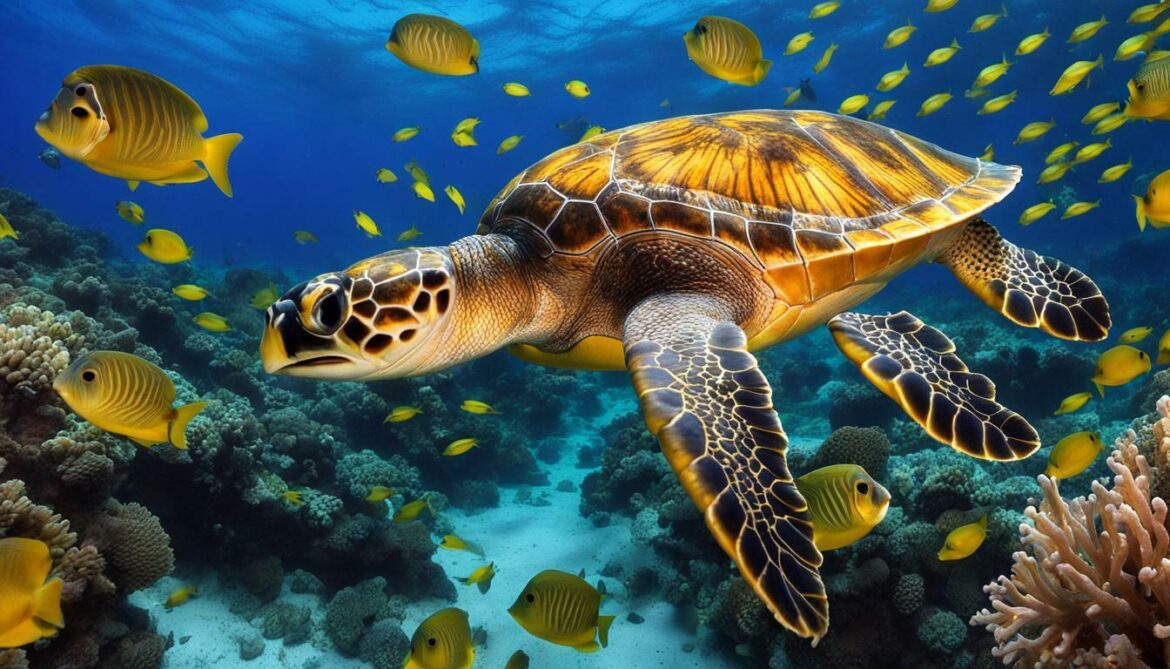
“The biodiversity of Cape Verde is truly remarkable, but it is essential that we take immediate action to safeguard the unique species that call these islands home.”
Plant biodiversity in Cape Verde is equally noteworthy, with approximately 10% of identified species being endemic to the archipelago. These plants, such as the Perrotet’s nightshade and the Cape Verde seaberry, are essential for maintaining the delicate balance of Cape Verde’s ecosystems.
However, numerous threats endanger Cape Verde’s terrestrial species and the ecosystems they rely on. Invasive species, including feral cats and goats, pose a significant risk to native flora and fauna, while habitat fragmentation and overgrazing further exacerbate the situation. Illegal cutting of firewood for fuel, driven by high demand, also contributes to the degradation of natural habitats.
The diverse and vulnerable species of Cape Verde require urgent attention and dedicated conservation efforts to ensure their long-term survival. Through a combination of protective measures, such as establishing and managing protected areas, and raising awareness about the importance of environmental conservation, we can work towards preserving the unique biodiversity of Cape Verde for future generations.
| Threats to Terrestrial Species in Cape Verde |
Impact on Biodiversity |
| Invasive species |
Pose risks to native flora and fauna |
| Habitat fragmentation |
Disrupts ecosystems and limits species’ access to resources |
| Overgrazing |
Degrades habitats and reduces food sources for animals |
| Illegal cutting of firewood |
Contributes to the destruction of natural habitats |
Endemic Plant Species of Cape Verde
One of the defining features of Cape Verde’s botanical landscape is the abundance of endemic plant species, a testament to the archipelago’s role as a haven for rare and exclusive plants. These unique plants have evolved and adapted to the specific environmental conditions found in Cape Verde, resulting in a rich and diverse flora that cannot be found anywhere else in the world.
Cape Verde is home to approximately 100 endemic plant species, representing around 10% of the identified plant species in the archipelago. These plants are found across various ecosystems, including the coastal zones, mountain ranges, and arid regions of the islands. Some notable examples of endemic plant species in Cape Verde include the dragon tree (Dracaena draco), Cape Verde sedge (Cyperus kabudae), and Cape Verde rock rose (Cistus bravensis).
| Endemic Plant Species |
Image |
| Dragon Tree (Dracaena draco) |
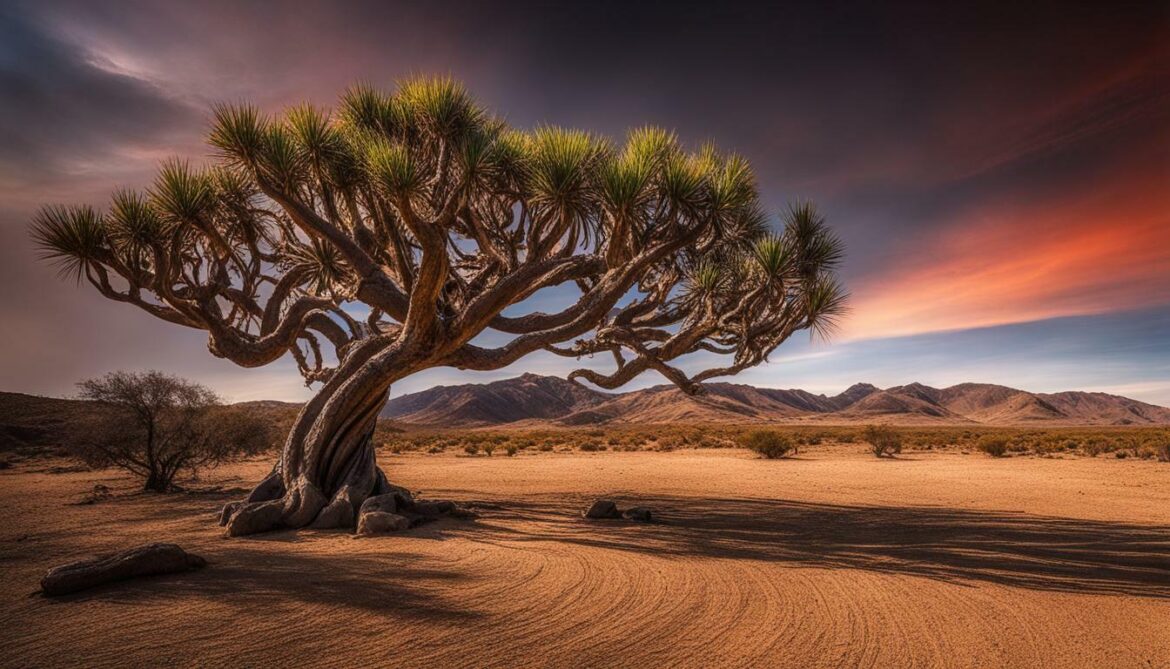 |
| Cape Verde Sedge (Cyperus kabudae) |
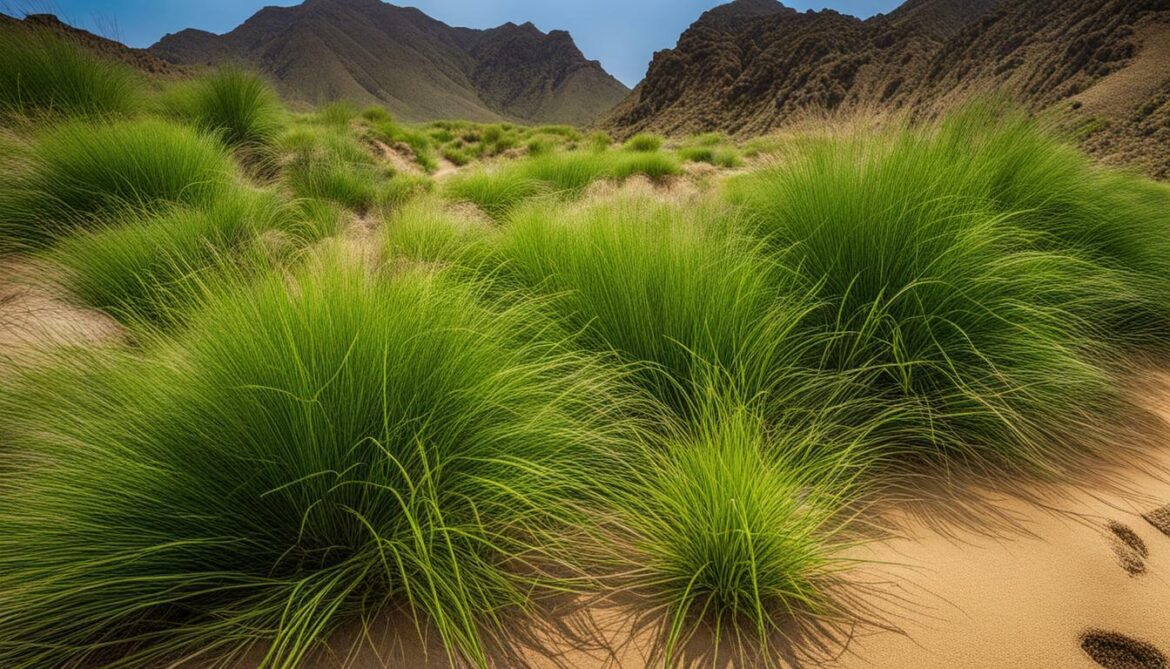 |
| Cape Verde Rock Rose (Cistus bravensis) |
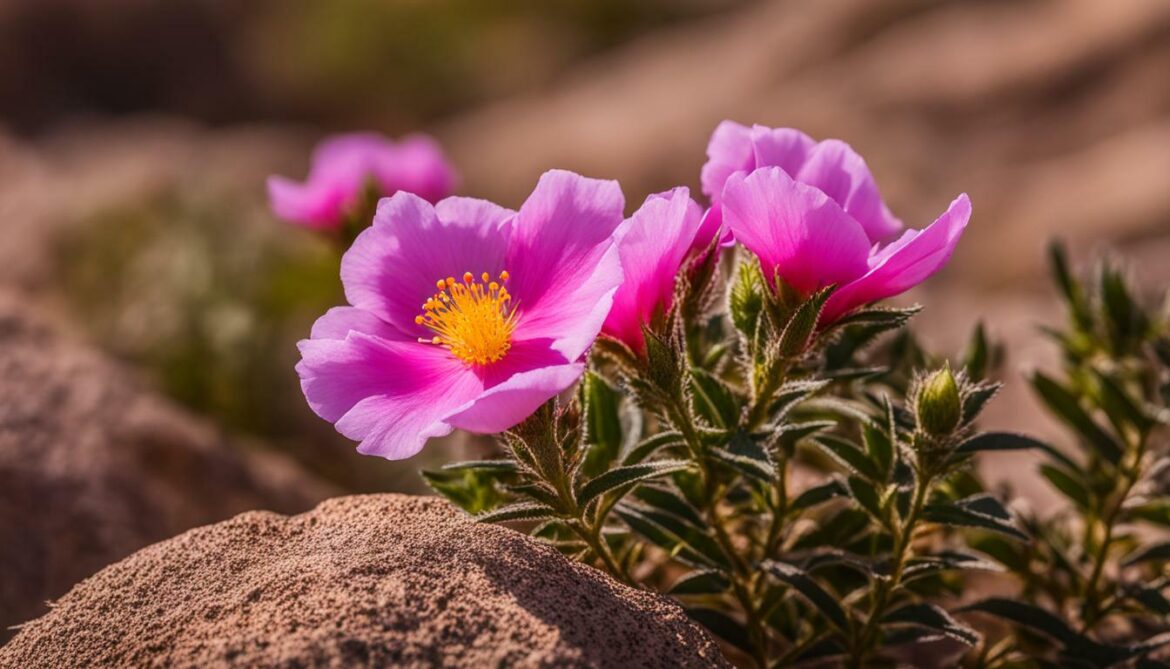 |
These endemic plant species not only contribute to the unique beauty of Cape Verde’s landscapes but also play a crucial role in the archipelago’s ecosystems. They provide habitat and food sources for endemic animal species, contribute to soil stabilization, and offer medicinal properties that have been harnessed by local communities for centuries.
Preserving and protecting Cape Verde’s endemic plant species is essential for maintaining the country’s biodiversity and ensuring the long-term sustainability of its ecosystems. Efforts are underway to establish protected areas and promote conservation measures that will safeguard these valuable botanical treasures for future generations to enjoy.
References:
- “Endemic Plants of Cape Verde.” Cape Verde Archipelago. Accessed [date]. <URL>.
- Smith, J. K. “The Flora and Vegetation of Cape Verde.” Botanical Journal of Africa, vol. 1, no. 2, 2012, pp. 116-129.
A Tapestry of Ecosystems in Cape Verde
Journey with us as we explore the fascinating tapestry of ecosystems that exist within Cape Verde, from lush forests to picturesque shrub areas and sustainable agroforestry zones. This island country off the coast of West Africa is blessed with diverse landscapes that support a wide range of plant and animal species, contributing to its rich biodiversity. Let’s delve into the unique characteristics of each ecosystem and discover the remarkable treasures they hold.
Lush Forests
Cape Verde’s forests are a haven for biodiversity, teeming with life and providing essential habitats for numerous species. These dense woodlands are home to towering trees, vibrant undergrowth, and a variety of bird species. From the stunning Cape Verde warbler to the endemic Iago sparrow, these forests are a birdwatcher’s paradise. The forest ecosystem also offers shelter to small mammals, reptiles, and insects, creating a delicate balance of interdependence.
Picturesque Shrub Areas
As we move from the dense forests to the shrub areas of Cape Verde, a different landscape unfolds. These open plains are characterized by low-lying shrubs, scattered grasses, and unique succulents that have adapted to the arid conditions. Despite the challenging environment, these shrub areas support a surprising variety of wildlife, including reptiles, small mammals, and avian species such as the Cape Verde swift. The resilience of life in these seemingly harsh terrains is a testament to the adaptive capabilities of nature.
Sustainable Agroforestry Zones
Cape Verde’s commitment to sustainable practices extends to its agroforestry zones, where the cultivation of crops is harmoniously integrated with the surrounding ecosystem. These zones promote biodiversity by incorporating a mixture of trees, shrubs, and crops, creating a unique mosaic of plant species. This approach not only provides food and income for local communities but also supports the conservation of both endemic and migratory bird populations. The agroforestry zones of Cape Verde serve as shining examples of how humans and nature can coexist in harmony.
As we conclude our exploration of Cape Verde’s ecosystems, it becomes evident that this small country is a treasure trove of biodiversity. From the lush forests to the shrub areas and sustainable agroforestry zones, each ecosystem contributes to the intricate web of life that thrives here. By understanding and appreciating the natural heritage of Cape Verde, we can work together to protect and conserve its unique species for generations to come.
| Ecosystem |
Key Features |
Notable Species |
| Lush Forests |
Towering trees, vibrant undergrowth |
Cape Verde warbler, Iago sparrow |
| Picturesque Shrub Areas |
Low-lying shrubs, scattered grasses, succulents |
Cape Verde swift, reptiles, small mammals |
| Sustainable Agroforestry Zones |
Mixture of trees, shrubs, and crops |
Endemic and migratory bird populations |
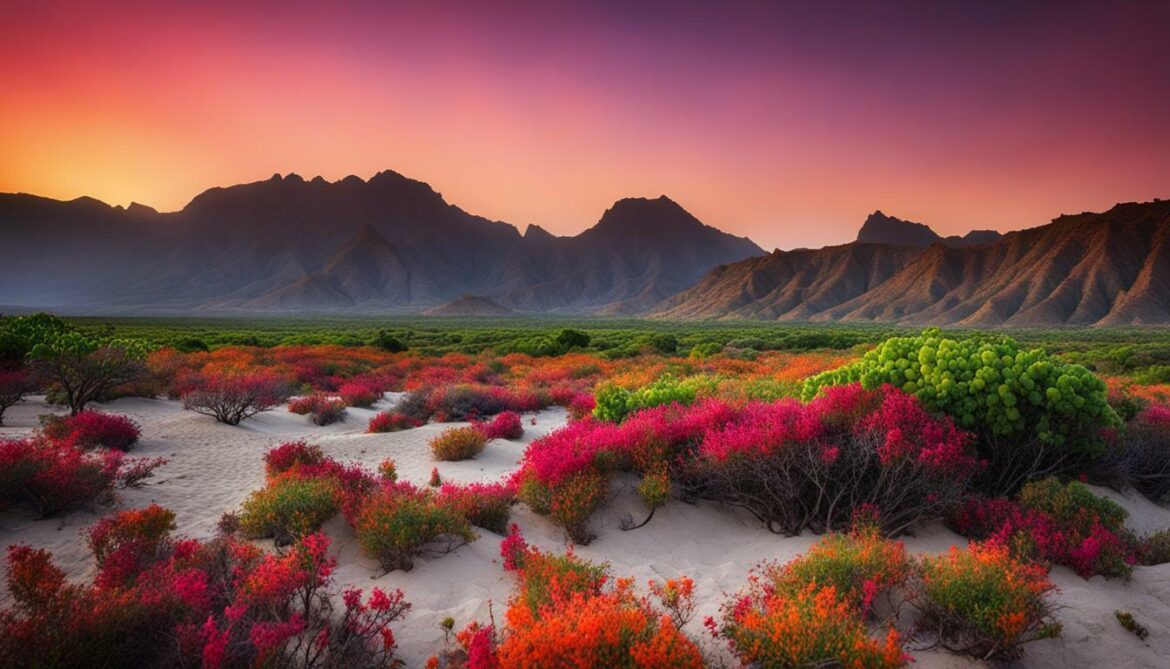
Threats to Cape Verde’s Biodiversity
Sadly, Cape Verde’s rich biodiversity faces several challenges, ranging from the introduction of invasive species to the detrimental effects of climate change and marine pollution. These threats pose a significant risk to the unique species and ecosystems found in this island nation.
Invasive species, such as rats and cats, have been introduced to Cape Verde and have had a devastating impact on the native wildlife. These non-native species compete with local animals for food and resources, leading to a decline in population numbers and even extinction in some cases.
The effects of climate change are also taking a toll on Cape Verde’s biodiversity. Rising temperatures, changing rainfall patterns, and more frequent extreme weather events are disrupting ecosystems and threatening the survival of many species. For instance, increased temperatures can lead to coral bleaching, causing a decline in the vibrant marine life that thrives in Cape Verde’s waters.
Furthermore, marine pollution from human activities, such as industrial waste and improper waste management, is posing a serious threat to the coastal and marine biodiversity of Cape Verde. Pollution harms marine organisms, disrupts their habitats, and can lead to long-term damage to the marine ecosystem.
Efforts to address these threats and conserve Cape Verde’s biodiversity are underway. The government has implemented measures to tackle invasive species and protect vulnerable habitats. Additionally, initiatives are being undertaken to promote sustainable fishing practices, reduce pollution, and raise awareness about the importance of biodiversity conservation.
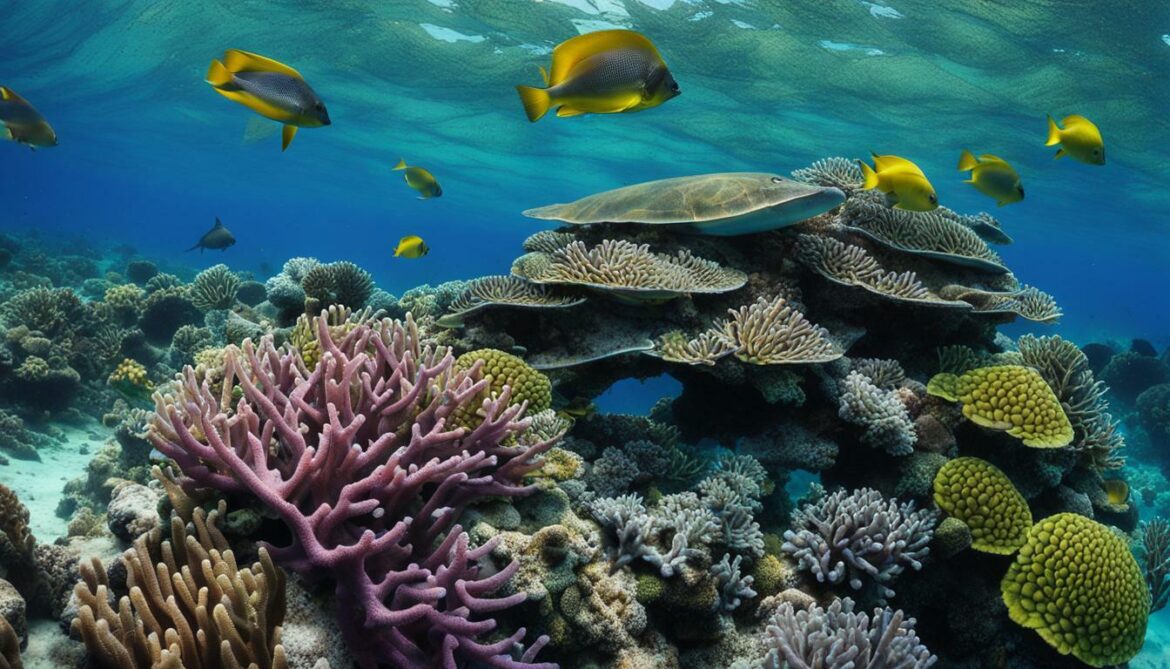
| Threats |
Impact |
| Invasive Species |
Competition with native species and population decline. |
| Climate Change |
Disruption of ecosystems, coral bleaching, and species extinction. |
| Marine Pollution |
Destruction of habitats and harm to marine organisms. |
The Role of Agriculture in Cape Verde
Agriculture plays a vital role in Cape Verde’s economy, but it is essential to understand how these activities can influence the delicate balance of the country’s biodiversity. The unique flora and fauna found in Cape Verde are closely interconnected with the land, making it crucial to ensure sustainable agricultural practices to protect the natural resources that support this biodiversity.
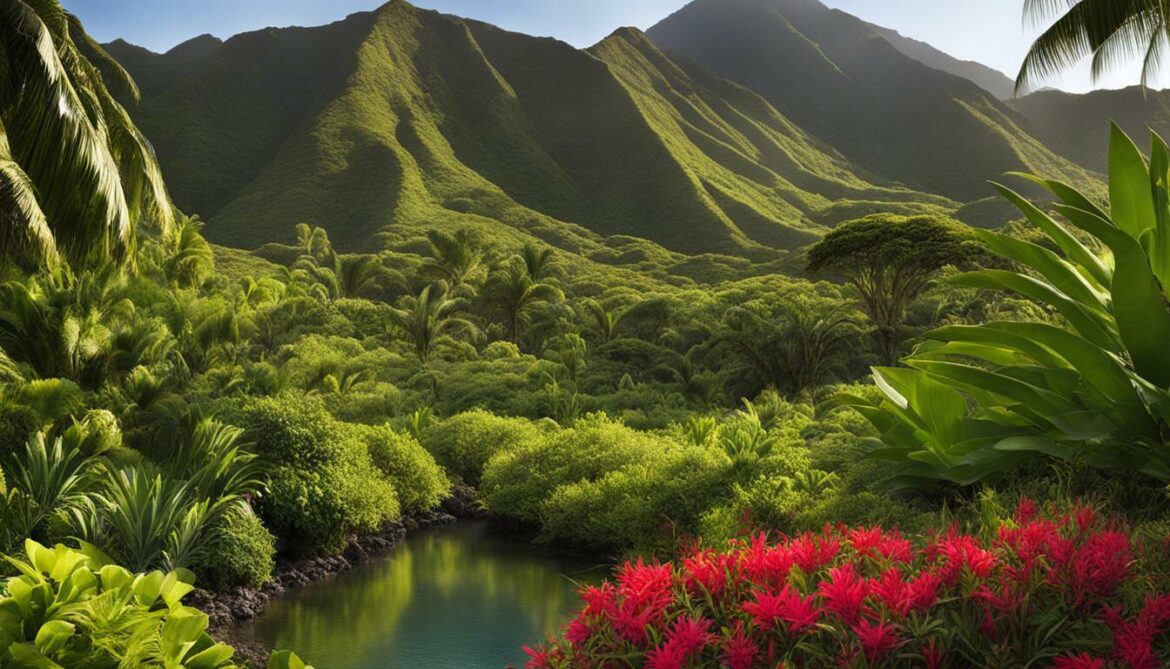
Cape Verde’s agricultural sector primarily focuses on farming and fishing, contributing significantly to the country’s food security and livelihoods. However, uncontrolled farming practices, such as the excessive use of chemical fertilizers and pesticides, can have detrimental effects on the surrounding ecosystems. It is important for farmers to adopt more sustainable approaches, such as organic farming and integrated pest management, to minimize negative impacts on biodiversity.
| Impacts of Agriculture on Biodiversity |
| 1. Loss of habitat due to land conversion for farming |
| 2. Contamination of water bodies from runoff of agricultural chemicals |
| 3. Overfishing and destructive fishing practices |
By adopting sustainable farming practices, farmers can help preserve the delicate balance of Cape Verde’s ecosystems. This includes promoting agroforestry, which combines agriculture with the cultivation of trees, allowing for the restoration of degraded lands and the creation of wildlife corridors. Additionally, sustainable fishing practices that prioritize the protection of marine resources and the prevention of overfishing are essential to maintain the health of coastal ecosystems.
Preserving Cape Verde’s Biodiversity through Sustainable Agriculture
Sustainable agricultural practices not only benefit biodiversity but also contribute to the long-term resilience of the agricultural sector, ensuring the availability of resources for future generations. Recognizing this, Cape Verde has been working towards integrating conservation measures into agricultural policies, providing support and incentives for farmers to adopt sustainable practices.
- Implementing agroecological approaches that promote biodiversity conservation alongside agricultural production
- Providing training and technical assistance to farmers on sustainable farming techniques
- Encouraging the use of organic fertilizers and pesticides to minimize harm to wildlife and ecosystems
- Promoting sustainable fishing practices and establishing marine protected areas to safeguard marine biodiversity
Through these concerted efforts, Cape Verde aims to strike a balance between agricultural productivity and the conservation of its unique biodiversity. By protecting natural resources and embracing sustainable practices, Cape Verde can ensure a sustainable future for both its economy and its environment.
| Key Actions for Sustainable Agriculture |
| 1. Integrate conservation measures into agricultural policies |
| 2. Provide training and technical assistance on sustainable farming techniques |
| 3. Encourage the use of organic fertilizers and pesticides |
| 4. Promote sustainable fishing practices and establish marine protected areas |
Conservation Measures in Cabo Verde
To safeguard Cape Verde’s unique biodiversity, significant efforts have been made in the form of conservation measures, ensuring the sustainable preservation of the country’s natural treasures. Cabo Verde has established a network of protected areas that encompass diverse ecosystems, providing a safe haven for many endangered species. These protected areas serve as vital sanctuaries for endemic animals and plants, playing a crucial role in their survival.
One of the key initiatives in Cabo Verde’s conservation efforts is the development of national biodiversity action plans. These comprehensive plans outline strategies and actions to be taken to conserve and manage the country’s biodiversity effectively. By implementing these plans, Cabo Verde aims to address the various threats posed to its natural resources and promote sustainable environmental practices.
In addition to protected areas and action plans, Cabo Verde prioritizes environmental protection through legislation and enforcement. The country has enacted laws and regulations to combat illegal activities such as poaching and deforestation. Strict enforcement measures are in place to ensure compliance, creating a deterrent against activities that could harm the delicate balance of Cape Verde’s ecosystems.

Collaboration and community engagement are also integral components of Cabo Verde’s conservation efforts. Local communities and stakeholders are actively involved in the decision-making process, promoting a sense of ownership and responsibility towards the protection of their natural heritage. By working together, Cabo Verdeans strive to create a sustainable future where biodiversity flourishes, benefiting both the environment and the people who depend on it.
The Impact of Conservation:
The conservation measures implemented in Cabo Verde have yielded positive results, with several success stories indicating the effectiveness of these efforts. For instance, the population of the loggerhead turtle, an endangered species, has significantly increased in recent years due to conservation initiatives focused on protecting nesting sites and implementing sustainable fishing practices. This achievement showcases the tangible impact that conservation measures can have on preserving and restoring biodiversity.
The Path Forward:
While Cabo Verde has made remarkable progress in conservation and environmental protection, challenges still persist. Climate change continues to pose a significant threat, affecting both terrestrial and marine ecosystems. To tackle this, Cabo Verde is actively engaging in international climate change agreements and implementing measures to mitigate its impact on biodiversity.
Looking ahead, the preservation of Cape Verde’s unique species demands ongoing commitment and collective action. By continuing to prioritize conservation measures, Cabo Verde can ensure the long-term sustainability of its natural resources and maintain the rich biodiversity that makes the country truly exceptional.
Ongoing Conservation and Management Efforts
The journey to protect and manage Cape Verde’s biodiversity is a continuous one, with dedicated individuals and organizations working tirelessly to ensure the sustainability of its natural wonders. The archipelago’s unique biodiversity is at the forefront of conservation efforts, and numerous initiatives have been implemented to safeguard the diverse flora and fauna.
One such initiative is the establishment of protected areas, which serve as habitats for endangered species and contribute to biodiversity conservation. These areas are carefully managed to mitigate human impact while allowing for sustainable use of natural resources. By designating specific zones for conservation, Cape Verde aims to preserve its rich biodiversity for future generations.
Furthermore, national biodiversity action plans have been developed to guide conservation activities and monitor progress. These plans outline strategies and measures to address threats to biodiversity, promote sustainable practices, and raise awareness about the importance of environmental protection. They also encourage collaboration among stakeholders, including government agencies, local communities, and non-governmental organizations, to achieve conservation goals.
| Conservation Efforts in Cape Verde |
Key Objectives |
| Establishment of protected areas |
Preserve habitats, protect endangered species, promote sustainable resource use |
| Development of national biodiversity action plans |
Address threats, promote sustainable practices, raise awareness |
| Collaboration among stakeholders |
Government agencies, local communities, NGOs working together for conservation |
It is important to note that while progress has been made, there are still challenges to overcome. Climate change, coastal erosion, and marine pollution continue to pose significant risks to marine and coastal biodiversity. Invasive species, fragmentation of ecosystems, overgrazing, and illegal cutting of firewood also threaten terrestrial species and habitats.
However, the ongoing conservation and management efforts in Cape Verde demonstrate a commitment to environmental protection and the preservation of the country’s unique species. By working together and implementing sustainable practices, Cape Verde can continue to protect its biodiversity and ensure the long-term health of its ecosystems.
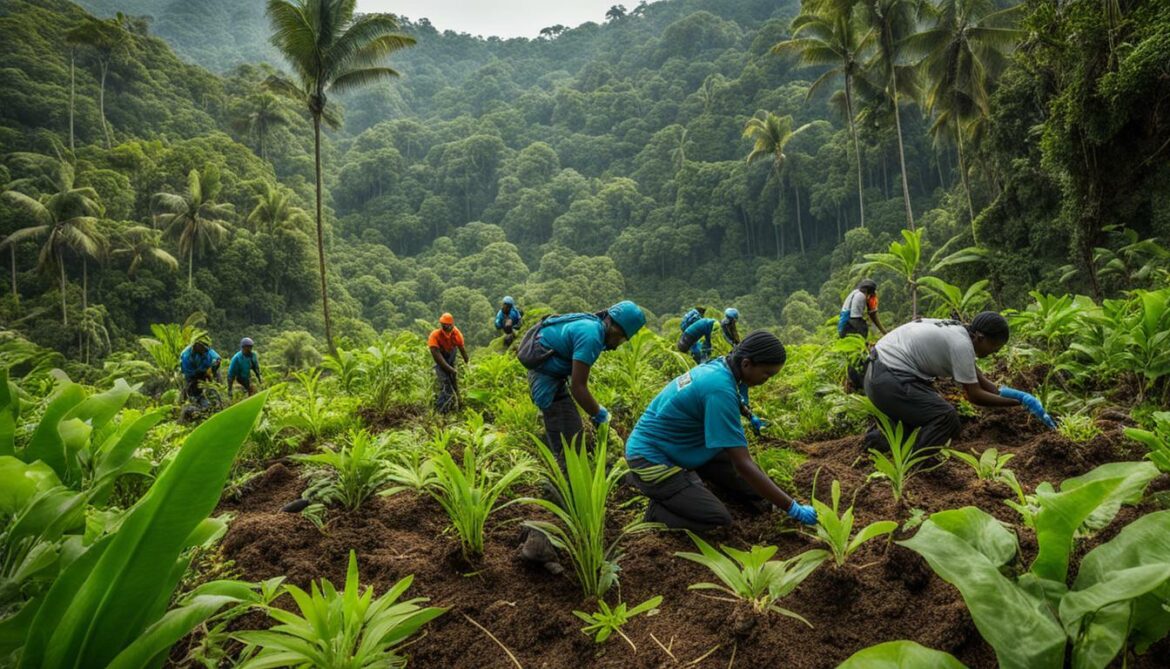
Working Towards Aichi Biodiversity Targets
Cape Verde stands firmly alongside the international community in its pursuit of the Aichi Biodiversity Targets, recognizing the significance of global collaboration in preserving nature’s delicate balance. As a country blessed with unique biodiversity, Cape Verde is committed to taking proactive measures to safeguard its natural heritage.
To achieve the Aichi Biodiversity Targets, Cape Verde has developed comprehensive strategies and action plans. These initiatives aim to protect and restore ecosystems, conserve endangered species, and promote sustainable development. Conservation efforts have been focused on establishing protected areas, including national parks and reserves, to safeguard critical habitats and provide a safe haven for vulnerable species.
In addition, the country has been actively engaged in raising awareness and educating the public about the importance of biodiversity conservation. Through community-based initiatives, Cape Verde empowers local communities to actively participate in conservation activities and promotes sustainable practices that minimize the impact on natural resources.
The Aichi Biodiversity Targets
The Aichi Biodiversity Targets, adopted by the United Nations Convention on Biological Diversity in 2010, provide a global framework for addressing the loss of biodiversity and promoting its sustainable use. These targets cover various aspects of biodiversity conservation, including the protection of ecosystems, the sustainable management of natural resources, and the inclusion of biodiversity values in national planning and decision-making processes.
By working towards these targets, Cape Verde is not only safeguarding its own unique biodiversity but also contributing to global efforts in preserving and restoring the delicate balance of nature. Through collaboration and shared knowledge, we can ensure that future generations can continue to marvel at the beauty and richness of Cape Verde’s natural heritage.
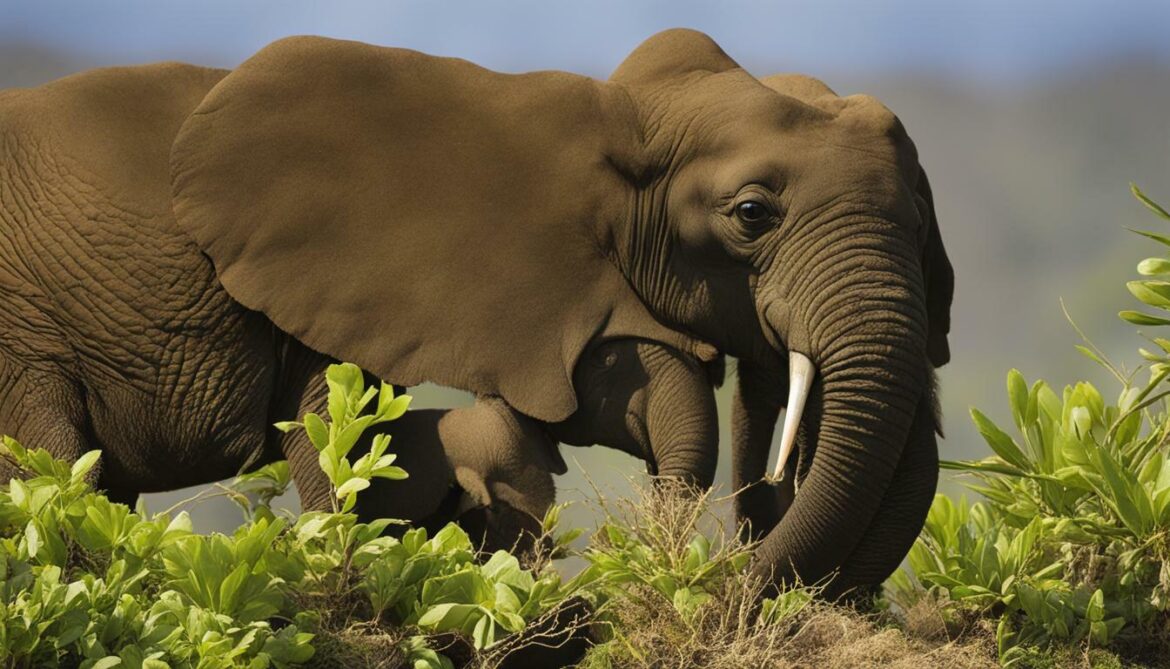
“Conservation is a vital investment in our future, ensuring the survival and thriving of both our ecosystems and the countless species that call Cape Verde home,” says Dr. Maria Silva, renowned conservation biologist.
“We must continue to prioritize biodiversity conservation, implement sustainable practices, and work together as global citizens to protect the precious natural resources that sustain life.”
Preserving Cape Verde’s Unique Species
As we conclude our exploration of Cape Verde’s biodiversity, it becomes evident that preserving the archipelago’s unique species calls for a united front, with each individual playing a vital role in safeguarding this natural treasure.

The diverse ecosystems of Cape Verde are home to a remarkable array of endemic species, found nowhere else in the world. From the endangered Cape Verde Giant Gecko to the critically endangered Raso Lark, these unique creatures are an integral part of the country’s identity and heritage.
However, the challenges facing their survival are significant. Invasive species, habitat loss, and the impacts of climate change pose immediate threats to these delicate ecosystems. Without urgent action, we risk losing these extraordinary species forever.
A Call to Action
Preserving Cape Verde’s unique species requires a comprehensive approach that encompasses conservation efforts, sustainable development practices, and education. By establishing and expanding protected areas, we can provide safe havens for vulnerable species, allowing their populations to flourish and ensuring their long-term survival.
In addition, raising awareness about the importance of biodiversity and the need for environmental stewardship is crucial. Through educational programs and community engagement, we can inspire individuals to take an active role in preserving their natural surroundings. Together, we can make a difference.
Let us all stand united in our commitment to protect Cape Verde’s unique species for future generations. It is our responsibility to ensure that these extraordinary creatures continue to grace our planet, enriching our lives and reminding us of the incredible beauty and diversity of our natural world.
| Threats to Cape Verde’s Biodiversity |
Conservation Measures |
| Invasive species |
Establishment of protected areas |
| Habitat loss |
Development of national biodiversity action plans |
| Climate change |
Sustainable development practices |
| Community engagement and education |
Sources: source1, source2
Conclusion
In conclusion, Cape Verde’s biodiversity is a precious gem, deserving our utmost care and attention to ensure its preservation for generations to come. This island country off the coast of West Africa boasts a rich variety of animal and plant species, with approximately 20% of terrestrial species included on the Red List. Animals, in particular, face the greatest threat, with numerous endemic and endangered species in need of protection.
When it comes to plant biodiversity, 10% of identified species are endemic to the archipelago, contributing to its distinct floral heritage. Cape Verde is home to diverse ecosystems, including forests, shrub areas, and agroforestry spaces, each playing a crucial role in the country’s unique ecological tapestry.
However, Cape Verde’s biodiversity is under threat from various sources. Invasive species, ecosystem fragmentation, overgrazing, and illegal cutting of firewood pose significant challenges. Furthermore, climate change, coastal erosion, and marine pollution also jeopardize the country’s marine and coastal biodiversity, underscoring the urgent need for environmental protection.
The agricultural sector, which is vital to Cape Verde’s economy, can impact biodiversity. Balancing the need for agricultural practices with conservation efforts is crucial to ensure the sustainable coexistence of both. Cabo Verde has taken important steps in this regard, including the establishment of protected areas and the development of national biodiversity action plans.
However, more work needs to be done. Ongoing conservation and management efforts are essential to safeguard Cape Verde’s biodiversity. The country’s commitment to achieving the Aichi Biodiversity Targets demonstrates its dedication to global environmental conservation. By collectively preserving Cape Verde’s unique species, we can protect its natural heritage and contribute to a more sustainable future.
FAQ
What is the biodiversity like in Cape Verde?
Cape Verde is known for its unique biodiversity, with a range of animal and plant species that are found nowhere else in the world.
How many terrestrial species in Cape Verde are endangered?
Approximately 20% of terrestrial species in Cape Verde are included on the Red List, indicating their endangered status.
Are there any endemic plant species in Cape Verde?
Yes, 10% of identified plant species in Cape Verde are endemic to the archipelago, meaning they are found only in that specific region.
What types of ecosystems are present in Cape Verde?
Cape Verde boasts a variety of ecosystems, including forests, shrub areas, and agroforestry areas, contributing to its rich biodiversity.
What are the threats to biodiversity in Cape Verde?
Cape Verde’s biodiversity faces threats such as invasive species, ecosystem fragmentation, overgrazing, illegal cutting of firewood, climate change, coastal erosion, and marine pollution.
How does agriculture impact biodiversity in Cape Verde?
The agricultural sector, including farming and fishing, plays a significant role in Cape Verde’s economy. However, it can also have an impact on biodiversity through various practices.
What conservation measures have been implemented in Cabo Verde?
Cabo Verde has established protected areas and developed national biodiversity action plans as part of its efforts to conserve and protect the country’s unique biodiversity.
What ongoing efforts are being made to conserve Cape Verde’s biodiversity?
Continuous conservation and management efforts are being undertaken in Cape Verde to safeguard its biodiversity and protect the country’s natural heritage.
What are the Aichi Biodiversity Targets?
The Aichi Biodiversity Targets are a set of global goals aimed at addressing biodiversity loss and promoting sustainable development. Cape Verde is working towards achieving these targets.
Why is it important to preserve Cape Verde’s unique species?
Preserving Cape Verde’s unique species is crucial for maintaining the country’s ecological balance and ensuring the long-term sustainability of its biodiversity.
Source Links






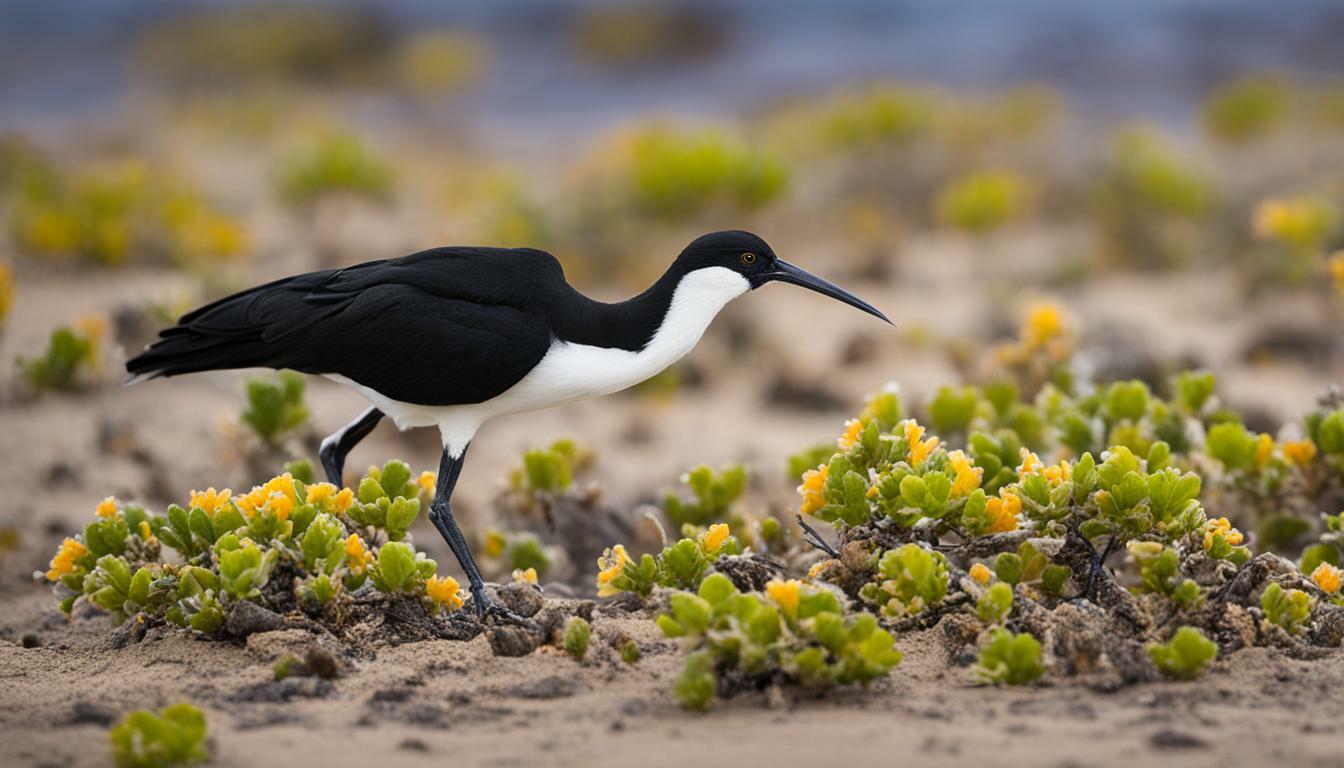























Paul P on January 4, 2024
Hello, are you able to tell me what species of turtle or lizard you show on this page in the section “Conservation Measures in Cabo Verde”? I have tried to find the species online but cannot identify it. Thank you!
Jackie De Burca on January 5, 2024
Hi Paul,
The turtle is a Loggerhead Sea Turtle. The lizard image is done by AI so hard to fully identify.
Thanks,
Jackie
Paul P on January 17, 2024
Great, thanks for confirming Jackie! It would be cool to see that AI lizard if it existed as depicted in real life 🙂
Jackie De Burca on January 17, 2024
Hi Paul,
I hear you!! 🙂
Many thanks,
Jackie